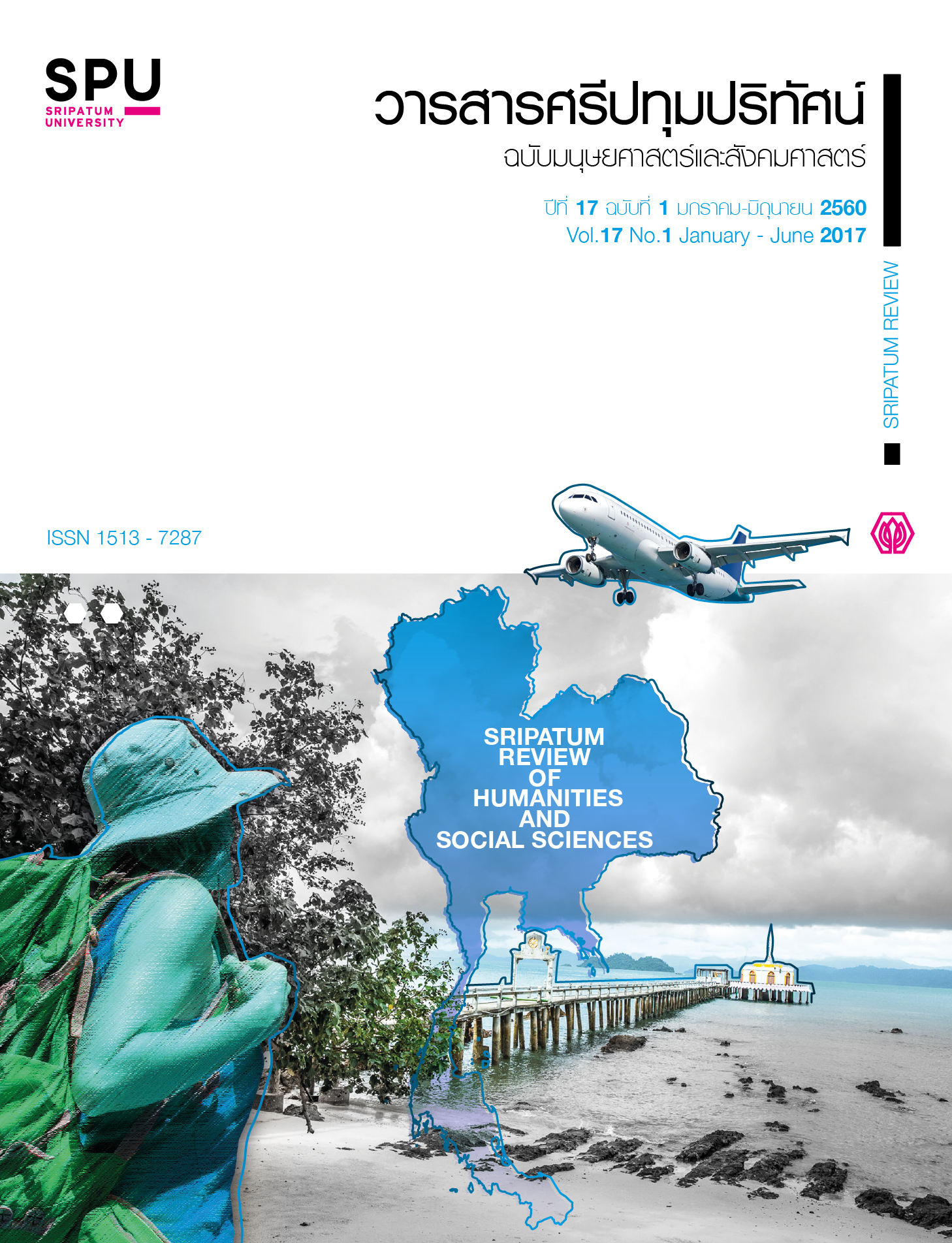THE WAYS TO FIND OUT THE PEOPLE WHO WANT TO BE TRAINED AND COMPARE THE TRAINING RESULTS BETWEEN THAI AND LAOTIAN WOMEN FOR THE ELDERLY CARE TRAINING COURSE IN THAILAND
Main Article Content
Abstract
The purposes of this research were to study the ways to get Laotian and Thai women to attend the Elderly Care Training Course in Thailand, and to compare results of training Thai and Laotian women in the Elderly Care Training Course. This study was a qualitative research. The data collection could be separated into two parts. In the first part, data was gathered via focus group discussion. The selected participants of this part were six people, 4 Laotians and 2 Thais who were involved in the Elderly Care Training Course and had the power for decision making on the ways to select Laotian women for attending the Elderly Care Training Course with the proper recruiting method. In the second part, data was derived from action research method and behavior observation. The participants were observed during course work (theory sessions) and practicing sessions. The participants in this part were classified into 2 groups - 5 Thai women and 5 Laotian women.
The results of this study revealed that there were 3 ways to recruit and select Laotian women to attend the Elderly Care Training Course in Thailand. The first one was to contact the Lao Women’s Union by following Laos’s single gateway law. The second one was to coordinate with the Laotians who already worked in Thailand to persuade their relatives or friends to attend the training course. The last one was the selection of trainees from Laotians who currently worked in Thailand.
In addition, this study also pointed out that the mean score from theory sessions for Thai women was 2.21 or B grade (Satisfactory level); while that of Laotian women was 2.47 or A grade (Good level). Meanwhile, the results from observation in practicing sessions for both Thai women and Laotian women were in the same level at A grade (Good level). The mean scores for Thai women and Laotian women in practicing sessions were 2.40 and 2.44, respectively.
Article Details
1. กองบรรณาธิการสงวนสิทธิ์ในการพิจารณาและตัดสินการตีพิมพ์บทความในวารสาร
2. บทความทุกเรื่องจะได้รับการตรวจสอบทางวิชาการโดยผู้ทรงคุณวุฒิ แต่ข้อความและเนื้อหาในบทความที่ตีพิมพ์เป็นความรับผิดชอบของผู้เขียนแต่เพียงผู้เดียว มิใช่ความคิดเห็นและความรับผิดชอบของมหาวิทยาลัยศรีปทุม
3. การคัดลอกอ้างอิงต้องดำเนินการตามการปฏิบัติในหมู่นักวิชาการโดยทั่วไป และสอดคล้องกับกฎหมายที่เกี่ยวข้อง
References
กฤตยา อาชวนิจกุล และกุลภา วจนสาระ. 2552. “รายงานการวิจัยการจ้างแรงงานข้ามชาติตามพระราชบัญญัติการทำงานของคนต่างด้าว พ.ศ. 2551 กับการจัดทำบัญชีรายชื่ออาชีพ สำหรับชาวต่างชาติ”. สืบค้นเมื่อวันที่ 8 พฤษภาคม 2559.
ชยุตม์ วันเกิด. 2555. “สถานการณ์ผู้สูงอายุไทย”. สืบค้นเมื่อวันที่ 4 กันยายน 2557.
นิดถา บุบผา. 27 กรกฎาคม 2558. รองหัวหน้าศูนย์ฝึกอบรมกระทรวงแผนการและการลงทุน. สัมภาษณ์.
นงลักษณ์ พะไกยะ. 2551. “ความต้องการกำลังคนด้านสุขภาพในการดูแลผู้สูงอายุ”. วันที่ค้นข้อมูล 20 กันยายน2559.
ศิวิไล ชยางกูร. 2555. แรงงานข้ามชาติกับความต้องการดูแลผู้สูงอายุในประเทศไทย [PDF]. มหาวิทยาลัยราชภัฏสวนสุนันทา.
สุภาพร คงศิริรัตน์. 2548. อัตลักษณ์ วิถีความคิดของคนไทยและคนลาวจากวรรณกรรมแบบเรียน. พิษณุโลก:มหาวิทยาลัยนเรศวร.
สุภางค์ จันทวานิช. 2556. วิธีการวิจัยเชิงคุณภาพ.(พิมพ์ครั้งที่ 21). กรุงเทพฯ: บริษัท ด่านสุทธาการพิมพ์ จำกัด.
สำนักงานเศรษฐกิจอุตสาหกรรม. 2556. “สถานการณ์ผู้สูงอายุโลก”. สืบค้นเมื่อวันที่ 28 กันยายน 2557.


